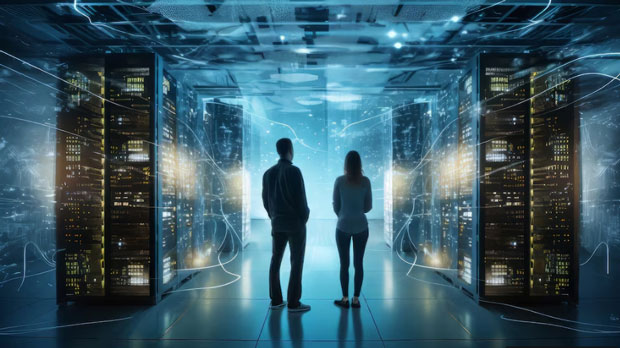In today's internet landscape, privacy and security have become primary concerns for many users. One of the most effective ways to enhance privacy is by using a proxy server, which can act as a middleman between the user and the internet, helping mask the user's IP address. However, not all web browsers natively support configuring a proxy server. Some browsers offer built-in features to directly configure proxy settings, while others require third-party extensions or system-level configurations. In this article, we will explore which browsers provide direct proxy server configuration options, helping users make informed decisions when securing their browsing experience. What is a Proxy Server and Why Use It?A proxy server acts as an intermediary between the user's device and the internet. When a user sends a request to access a website, the request first goes through the proxy server, which then forwards it to the destination server. The response from the server is sent back to the proxy, which in turn sends it to the user's device. This process helps to hide the user's IP address, providing enhanced privacy, access to geo-restricted content, and increased security. Users may also use proxy servers to manage and filter internet traffic, making them essential for both individual and organizational purposes.Browsers That Support Direct Proxy Server ConfigurationNot every web browser allows users to configure a proxy server directly within the browser settings. Below are some of the most popular browsers that offer this feature:1. Mozilla FirefoxMozilla Firefox is one of the most popular web browsers known for its flexibility and user-centric features. Firefox offers native proxy server configuration options directly within the browser’s settings, which makes it an excellent choice for users looking to configure proxies easily.To set up a proxy in Firefox, users simply need to go to the "Network Settings" section under "Preferences." From there, they can manually configure the proxy settings for HTTP, HTTPS, and FTP protocols. Firefox supports SOCKS proxies as well, making it a versatile choice for various proxy types. Furthermore, users can configure their proxy settings to bypass the proxy server for certain websites by using the "No Proxy for" feature.2. Google ChromeGoogle Chrome, like most browsers, does not provide native proxy configuration settings within the browser itself. However, it utilizes the operating system’s proxy settings, meaning users can configure proxies at the system level, and Chrome will use these settings automatically. This method works well for users who want a consistent proxy configuration across all applications and browsers on their device.For Windows, Chrome follows the system-wide proxy settings configured in the Internet Options menu. For macOS, the browser uses the network settings configured through the System Preferences. Although users cannot directly configure proxies in Chrome, it is possible to use command-line flags or extensions to add proxy capabilities for more specific configurations.3. Microsoft EdgeMicrosoft Edge is built on Chromium, the same engine as Google Chrome, and therefore inherits similar behaviors regarding proxy configuration. Edge does not offer native proxy configuration within the browser settings. Like Chrome, users must configure proxies at the system level, either through Windows Internet Options or the macOS network settings.However, Edge supports proxy settings via command-line flags for advanced users, providing more customization for how the browser handles proxies. Furthermore, Edge users can also install third-party proxy management extensions from the browser’s extension store to manage proxies within the browser interface itself.4. SafariSafari on macOS does not provide an internal option for configuring proxies directly within the browser. Instead, it uses the proxy settings configured in the macOS system preferences. To set up a proxy in Safari, users must navigate to the "Network" settings in the System Preferences, select their active network connection, and enter the desired proxy server details.Safari relies heavily on system-wide proxy settings, making it less flexible than other browsers like Firefox. Users who wish to configure advanced proxy settings must rely on third-party applications or extensions to gain greater control over their proxy setup.5. OperaOpera is a Chromium-based browser that offers direct proxy configuration within its settings. Users can go to the "Settings" menu, select the "Advanced" tab, and then configure proxy settings under the "System" section. Opera supports HTTP, HTTPS, and SOCKS proxy protocols, making it a good choice for users looking for an easy-to-use browser with built-in proxy configuration.Additionally, Opera also provides a free VPN service, which can act as a proxy to hide the user’s IP address and encrypt traffic for added security. This makes Opera particularly attractive to privacy-conscious users.How to Configure Proxy Settings in Supported BrowsersFor those browsers that support direct proxy configuration, setting up a proxy is usually straightforward. The process generally involves navigating to the settings menu and entering the necessary proxy details, including the IP address and port number for the proxy server. Users may also need to choose the type of proxy they are using (HTTP, HTTPS, SOCKS5, etc.) depending on the services they are accessing.For browsers like Firefox and Opera, which allow manual configuration, the setup process is intuitive, involving only a few steps to enter the server details. However, for browsers that rely on system-wide proxy settings (like Chrome, Edge, and Safari), users must configure proxies in their operating system settings, and the browser will use these settings automatically.Benefits and Drawbacks of Using Proxy Servers in BrowsersUsing proxy servers within browsers offers several advantages, including enhanced privacy, improved security, and the ability to bypass geographical restrictions. Proxy servers can also help reduce the risk of malicious activity, such as tracking and phishing attempts, by masking the user's real IP address.However, there are also some potential drawbacks. For instance, using proxies can slow down internet speeds, especially if the proxy server is located far from the user or is heavily loaded with traffic. Additionally, proxies may not offer the same level of encryption and security as a Virtual Private Network (VPN), so users may still be vulnerable to data interception.ConclusionIn conclusion, while several browsers support direct proxy configuration, the ease of use and the range of proxy types supported vary. Mozilla Firefox and Opera stand out as browsers that offer native proxy configuration within the browser itself, making them ideal for users seeking simplicity and flexibility. On the other hand, browsers like Chrome, Edge, and Safari rely on system-wide proxy settings, which may require additional configuration steps. Ultimately, the choice of browser for proxy configuration will depend on individual needs, the level of control desired, and the type of proxy services required. By understanding the available options and their limitations, users can make better decisions regarding their online privacy and security.
Jul 09, 2025


































































